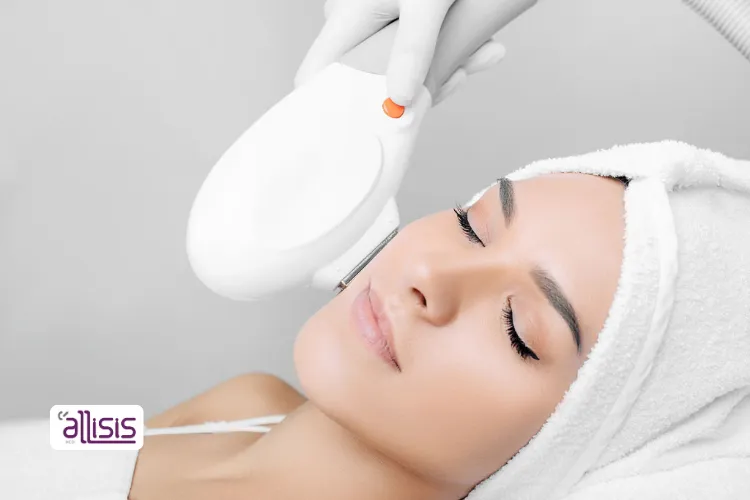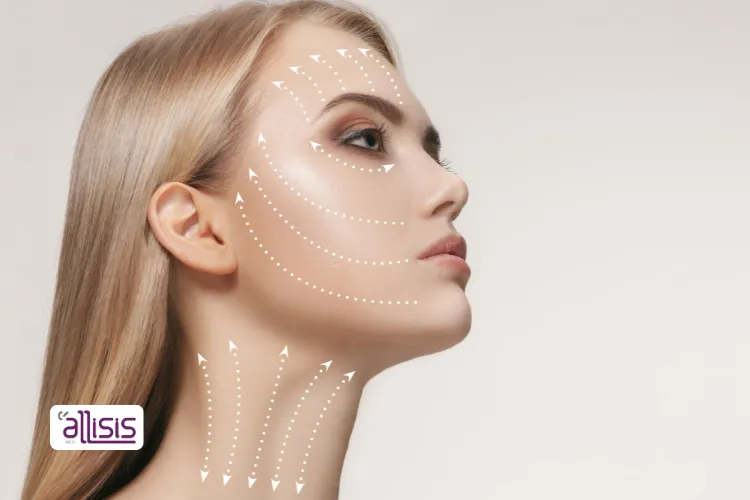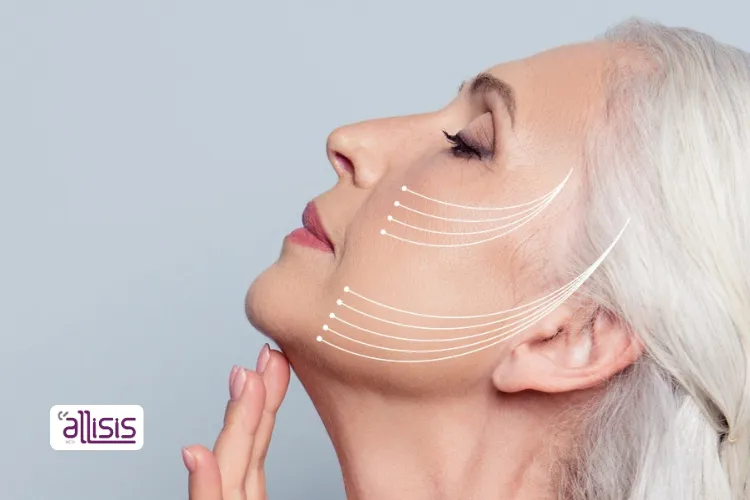For those seeking a youthful and healthy-looking face, facial rejuvenation has always been the best solution. With so many types of facials available today, many wonder, “How long does facial rejuvenation last?”. It might last longer depending on treatment type, skin health, lifestyle, and maintenance routine. This how-to guide will explain some facial rejuvenation treatments, how long they last, and how to prolong their effects.
What is Facial Rejuvenation?
As persons between the ages of 25 and 70 years can be susceptible to premature aging because of a number of factors in their normal life, facial rejuvenation is an all-encompassing term that applies to the various techniques that get the skin looking nicer by reducing freckles, improving the texture and color of the skin, and addressing amount loss. Facial rejuvenation may be non-surgical, minimally surgical, or surgical.
How Long Does Facial Rejuvenation Last?
Several common variables affect how long facial rejuvenation lasts.
- Type of treatment: Some treatments last longer than others.
- Quality and age of skin: The better the skin, the longer the effects will last.
- Lifestyle: Such as smoking, too much exposure to the sun, unhealthy dieting, etc.
- Maintenance & follow up: Improvement is longer lasting with skin maintenance and repeat treatments.

How Long Do Non-Invasive Facial Rejuvenation Treatments Last?
One of the most common questions asked about each of the types of non-surgical facial rejuvenation is how long the effects will last. Some need to be repeated; others last for years. Here, we detail how long some of the most popular treatments typically last.
- Chemical Peels
Chemical peels are rejuvenating skin treatments that resurface the skin, shed old surface layers, and cause cell turnover to expose smoother, brighter-looking skin. The result depends on the depth of the peel, with superficial, medium-depth, and deep peels entailing different lengths of time and recovery.
Superficial peels: 1-2 months.
Medium-depth peels: six to 12 months.
Deep peels: for years, but these take longer to recover.
- Microneedling
Microneedling causes the enhancement of collagen production, tightening the texture and firmness of the skin and complexion of the skin. Results can be seen in 3 to 6 months. One-year treatment of needleless can give excellent results, while two-stage treatment may take six months. Treatment time depends on the frequency and response of the skin of the patient, giving smoother and younger skin.
- Skin-Tightening Treatments
Skin-tightening treatments like dermal skin tightening and radiofrequency stimulate collagen production, firming the skin and enhancing elasticity. The result, depending on the number of treatments, skin reaction, and type used, will last 6 months to 1 year.
- Laser Skin Resurfacing
Laser skin resurfacing is the latest laser technology that smoothens out the texture of the skin, peels away pigmentation, and eliminates fine lines. It refines the overall quality of the skin, with non-ablative and ablative varieties available to achieve different effects.
- Non-ablative lasers: Effects usually last between a few months to one year.
- Ablative laser therapies: Depending on the sun protection factor and skincare routine, the outcome is 2 to 5 years.
- Dermal Fillers
Dermal fillers are injectable gel-like materials that applied to re-build volume, eliminate wrinkles, and restore facial shape by filling volume loss in the face. They are temporary based on the type of filler utilized.
- Hyaluronic acid fillers (Juvederm, Restylane): 6–18 months.
- Calcium hydroxylapatite (Radiesse)· Lasts for up to 2 years.
- Poly-L-lactic acid (Sculptra): Up to 2-3 years.
- Botox and Neuromodulators
Botox and other neuromodulators soften facial muscles, thus lessening wrinkles and fine lines. The duration of the effect of the results ranges from 3 to 6 months, depending on the person. To maintain the skin smooth and wrinkles, repeated maintenance sessions must be performed.
How Long Do Invasive or Surgical Facial Rejuvenation Treatments Typically Last?
Facial rejuvenation surgical or invasive procedures are longer-lasting than non-invasive procedures. They take one year to more than ten years, depending on the procedure. Below is how long most common surgical procedures last.
- Facial Fat Grafting
A process of fat extraction from the body and transferring it to the face to restore lost volume. The outcome is permanent, though some fat will be absorbed over time.
- Thread Lifts
Thin, absorbable threads are implanted under the skin to lift and tighten facial tissue. A relatively painless technique, Thread Lifts create a temporary effect, which is typically sustained for 12 to 18 months before maintenance or follow-up procedures are needed.
- Surgical Facelift
Excess skin is removed, and deeper tissues are tightened during a surgical facelift for long-term renewal. Results will last 10 to 15 years, with good skincare and sun protection keeping one looking youthful.

Sustaining the Results of Rejuvenation
Here are some easy steps to make your facial rejuvenation treatment last longer:
- Take a Skincare Routine
Your best friends are antioxidants. Vitamin C, for instance, protects against free radical damage. Add retinoids to the mix to induce collagen synthesis and maintain skin elasticity.
- Drink Water and Eat a Healthy Diet
Drink a lot of water to keep your skin hydrated and plump. Feed your skin a balanced, nutritious diet that contains vitamins and good fats.
- Avoid Bad Habits
Eliminate excessive exposure to the sun and use SPF at all times. Quit smoking and minimize overindulgence in alcohol, which hastens the aging process of the skin.
- Control Stress
Ensure that you meditate or do yoga so that you don’t allow your body to age due to stress.
- Take Maintenance Treatments
Schedule regular touch-ups or maintenance therapy to keep the results going.
Who Are the Right Candidates for Facial Rejuvenation?
Facial rejuvenation treatments may be a good option for most people, but the ideal candidates are usually:
- Those with fine lines, wrinkles, or loss of volume.
- Individuals who have irregular skin tone, sun spots, or dark spots
- Anyone who desires non-surgical or minimally invasive options to surgery.
- People who are willing to maintain outcomes with a proper skin care regimen and follow-up treatments.
How Hormones Affect the Longevity of Facial Rejuvenation
Hormones have a significant impact on skin health, and hormone fluctuations can, therefore, render any facial rejuvenation treatments ineffective and non-durable. Hormones levels in body can change with aging, menopause, pregnancy or medical condition that can subsequently decrease collagen levels, skin elasticity and general skin quality. As a result, the effects of treatments like Botox, fillers, and skin-tightening may last shorter or require more regular touch-ups to get optimal results.
Can You Perform Multiple Rejuvenation Procedures to Enhance the Results?
Yes, when skin rejuvenation treatments are combined, they can help improve and prolong results. Botox and dermal fillers complement each other beautifully to smooth out wrinkles and replace volume. Microneedling with radio frequency skin tightening for firmer skin by boosting collagen. Chemical peels and laser resurfacing help with texture and pigmentation. A thread lift can be combined with fillers for additional lift and definition.
This also treats multiple aging issues at once for more natural and longer-lasting results. However, spacing out treatments and seeking a professional’s guidance for what’s done next and how soon after the first are key for getting the best skin rejuvenation treatment.
The Impact of Skin Type on Facial Rejuvenation Longevity
Skin type also affects how long the facial rejuvenation results will last. More oil means quicker breakdown of Botox and fillers, as they are excreted with sebum production.
Laser resurfacing or peels may fade more quickly on dry skin without adequate hydration. Some sensitive skins may need gentler and more regular applications for improvement to last.
Thicker skin retains fillers longer, but thinner skin can display results earlier, then lose them sooner. Skin care products that focus on your skin type and professional recommendations can help maintain and extend the effects of facial rejuvenation treatments.
What Age Should You Start Facial Rejuvenation Treatments?
In general, the best age to begin facial rejuvenation procedures varies based on individual skin concerns and signs of aging. Preventative treatments such as Botox can start in the late 20s or 30s to prevent fine lines. Peels, microneedling, and lasers are great in the 30s and 40s for working on texture and collagen production. In the 40s and above, dermal fillers restore lost volume. Facelifts and surgical options are often reserved for those in their 50s or 60s. The sooner you begin a solid skincare and preventative routine, the longer you can maintain it and delay these more invasive treatments down the road.

Are Popular Facial Rejuvenation Treatments Worth Their Long-Term Risks?
Although facial rejuvenation treatments can provide wonderful results, there are also risks of long-term complications that people need to know about beforehand:
Skin Sensitivity and Damage
Excessive use of chemical peels, laser resurfacing or aggressive exfoliation treatments can thin the skin, leaving it more vulnerable to environmental damage. This may result in prolonged redness, irritation, or even vulnerability to sun damage down the road with improper care.
Looks Too Fake or Overdone
Excessive use of Botox and dermal fillers can create a stiff or frozen appearance or overblown features. Too much filler can result in a puffy face, and too much Botox can lead to decreased muscle tone, making it impossible for the face to show natural feeling.
Hyperpigmentation or Scarring
Deeper procedures may also have the potential of post-inflammatory hyperpigmentation (PIH), especially in patients with darker skin types (deep chemical peels, laser resurfacing, thread lifts, etc). Sometimes, if it heals wrong, it can leave a permanent scar.
Results that are Inconsistent or Temporary
Examples of non-invasive treatments are radio frequency skin tightening and microneedling, both of which require multiple sessions and maintenance. Should treatments be halted, results may wane, meaning an investment in long-term skin care is needed to preserve benefits.
Allergic Reactions or Other Complications
Once again, this is a procedure like injectable treatments, dermal fillers, or Botox that poses potential risks of allergic reaction, infections, or lump formation under the skin. In some rarer cases, fillers can migrate; that is, the filler material can move from the site of injection, leading to unevenness or the need for corrective procedures.
Hormonal and Lifestyle Factors That Influence Results
The quality of treatments aside, hormonal fluctuations, solar exposure, smoking, and inadequate skincare can all contribute to skin aging and result in longevity. That said, it wouldn’t be as long-lasting without proper post-treatment care.
Rejuvenate Your Skin Now
The response to “How long does facial rejuvenation last?” depends on the treatment, lifestyle factors, and aftercare routine. Some provide temporary results, while others, a permanent answer. By knowing your options and committing to an appropriate skincare routine, you will enjoy youthful, glowing skin for years to come.
Consult a professional to identify your best skin rejuvenation treatment if facial rejuvenation is on your mind! By taking the right steps, you can look and feel youthful for longer than you’d think!

